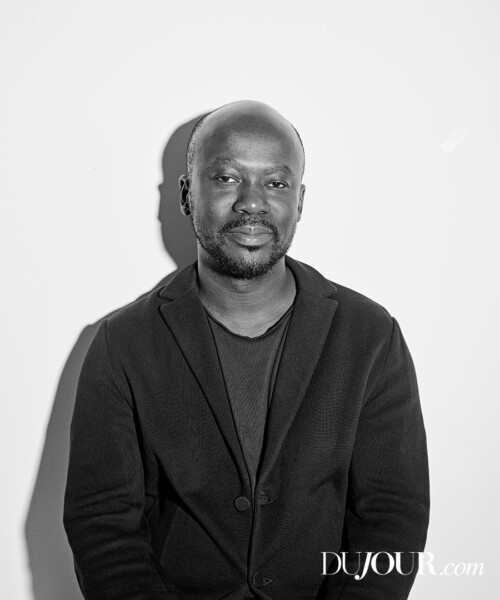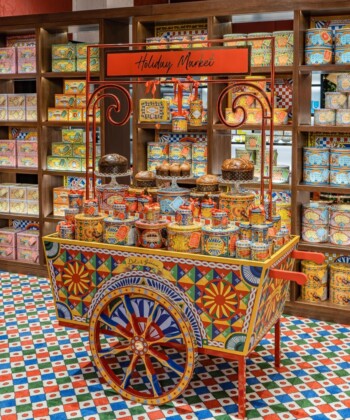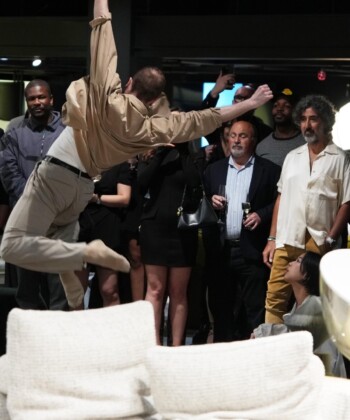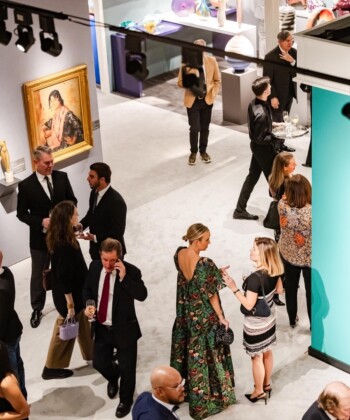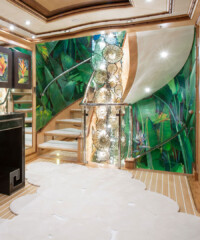Nothing’s done quickly in Washington, D.C., and politics are usually to blame. The Smithsonian’s National Museum of African American History and Culture, now slated to open in late 2016, has been seven years in the making, something its architect, David Adjaye, attributes to the red tape that comes along with working in our nation’s capital. “A modest-scale civic project usually takes three to five years,” Adjaye explains. “But with the Smithsonian, politics entered into it.” It thus took four years to design the building, “and three more just to get through the system.” For some architects this sort of delay could be frustrating, but for Adjaye, who won this project over heavyweights like Foster + Partners and Diller Scofidio + Renfro, the leisurely pace was preferable.
“This is a slow business, but I love it being slow,” Adjaye says, sitting in his Lower Manhattan office. “This relaxed pace allows you to spend a lot of time thinking about exactly what it is you want a building to be.” In the case of the Smithsonian, that meant an environmentally conscious structure designed to express the resiliency of a diverse community and to house historical documents and cultural artifacts, including artwork by Lorna Simpson and Romare Bearden, a dress that belonged to Rosa Parks, the Jim Crow railroad car and Nat Turner’s Bible from the 1830s. It was no small task. Still, seven years is a lengthy gestation period even by public-building standards. Luckily, Adjaye had plenty to keep him occupied.
While the 48-year-old Adjaye might call London home, these days he’s showing up just about everywhere. Last spring in Milan, his inaugural furniture collection for Moroso premiered at Salone del Mobile to critical acclaim. An exhibition he curated of African textiles from the Cooper-Hewitt Museum’s permanent collection opened last summer in New York City. In September, Adjaye will be the toast of the Windy City, thanks to a retrospective opening at the Art Institute of Chicago, and concurrently in Washington, D.C., construction is wrapping up at the Smithsonian, his biggest project to date.
To anyone paying attention to international architecture, this is no great surprise. Adjaye’s name is bandied about for seemingly every high-profile project that comes up (he’s rumored to be in the running to design Barack Obama’s presidential library), and he has secured the kind of marquee commissions—like the Nobel Peace Center in Oslo, the Denver Museum of Contemporary Art and his latest, a new building for the Studio Museum in Harlem, to name a few—of which many of his contemporaries can only dream. He’s also taken on less glittering but equally ambitious projects, including a recently opened affordable-housing development in Upper Manhattan.
“This is an important moment in David’s career,” says Zoë Ryan, chair of the department of architecture and design at the Art Institute of Chicago. “The Smithsonian is a project of national and international significance, and he now has more than 50 built projects and many more in development all over the world.”
The National Museum of African American History and Culture, the Smithsonian’s first new building since 2004, anchors the National Mall, commanding a plot adjacent to the Washington Monument, and its zigzagging design, veiled in a perforated-bronze filigree, nods to both Yoruban building techniques and classical Greek architecture. It’s the kind of cross-cultural mash-up that has become Adjaye’s signature. As museum director Lonnie Bunch said in 2013, “[Adjaye] could see this project for what I wanted it to be, which was not just a museum for black people but a museum to help people of one culture understand the experience of people of a different culture.”
Adjaye’s success owes to formidable savvy and skills—not only as a sculptor of space, but also as an advocate for the power of design. He is an agitator with impressive diplomatic chops, which isn’t surprising considering Adjaye’s father was a Ghanaian diplomat. During the 1960s and ’70s, the family hopscotched throughout Africa and the Middle East—from his birthplace of Tanzania to Egypt and Libya—before settling in London when Adjaye was in his early teens. “I get itchy,” he says, “if I stay in one place too long.”
As a result, Adjaye is constantly on the move, and worldly might be the term that best sums up both his sensibility and his practice. He has offices (and residences) on three continents, and his firm juggles work across the globe. Recent projects include a concept store in Lagos, Nigeria, a business school in Moscow and a silk-weaving workshop in India for the fashion brand Maiyet.
In an era when technology makes it easy for an architect to design remotely—transmitting files across cyberspace and visiting a construction site to monitor progress only intermittently—Adjaye is an anomaly. Not only does he travel nonstop to oversee the work being executed, so do his top staffers. “Right now, one of my directors is on the West Coast looking at a site, another is in the Caribbean and yet another is in Toronto,” he says. “I hate the idea of a design practice that’s bums on seats.”
Adjaye finds travel essential to his way of thinking. “Moving around the world gives me a different perspective—and a critical edge,” he explains. “It lets me look at something upside down when everyone else is looking at it straight on.” That notion applies to every facet of his design process. In most architects’ offices, models are shown on low tables, affording a godlike view down into them. At Adjaye Associates’ 20-person New York office, models are presented on a ledge about five feet above eye level. “Some architects have a panoptic relationship to models,” he explains. “I prefer to place them within the view line, as you’d see the building from down the street.” Closer, that is, to how people really experience architecture.
NEXT: “I think it’s essential that we are a part of the change in Africa.”

























